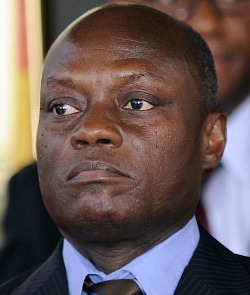 Guinea-Bissau is a small West African country bordering the North Atlantic Ocean between the Republic of Guinea (Guinea-Conakry) and the Republic of Senegal. Guinea-Bissau borders the Republic of Senegal to the North and the Republic of Guinea to the South and East. Guinea-Bissau has a total land area of about 36,125 square kilometers (about 8,005sq km of which is covered by water) with about 350km of coastline.
Guinea-Bissau is a small West African country bordering the North Atlantic Ocean between the Republic of Guinea (Guinea-Conakry) and the Republic of Senegal. Guinea-Bissau borders the Republic of Senegal to the North and the Republic of Guinea to the South and East. Guinea-Bissau has a total land area of about 36,125 square kilometers (about 8,005sq km of which is covered by water) with about 350km of coastline.
Just about 8.2% of Guinea-Bissau’s total land area remains arable (or land good for farming). Guinea-Bissau is a very small country by population size with an estimated population of just 1.8 million people with the population growth rate hovering around 1.9%. About 50% of Guinea-Bissau’s population lives in urban areas in major cities and towns such as Bissau the capital. Bissau contains about 500,000 people. The rest of the population lives mostly in rural areas as subsistence farmers who grow crops and rear animals just to feed themselves and their families.
Despite its small population size, Guinea-Bissau remains rich with diversity. There are several ethnic and racial groups living in Guinea-Bissau today. The three major ethnic groups, the Fulani, the Balanta and the Mandinga together make up about 66% of the population. Others include the Papel (about 9.1% of the population), the Manjaco (about 8.3%), Beafada (about 3.5%), Mancanha (about 3.1%), the Bijago (about 2.1%), Felupe (about 1.7%), the Mansoanca (about 1.4%) and the Balanta Mane (about 1% of the population). Guinea-Bissau is largely Islamic with Muslims forming about 45.1% of the population. Christians make up just about 22.1% with animists forming about 14.9% of the total population. Although Portuguese remains the official language, several ethnic and local languages such as Crioulo, Pular and Mandango are spoken in Guinea-Bissau today.
Just like its neighboring countries, Guinea-Bissau is blessed with abundance of natural resources including unexploited deposits of petroleum, bauxite, granite, limestone, phosphates, fish, timber and clay. However, despite the abundance of natural resources, Guinea-Bissau remains one of the poorest countries in Africa with about 67% of its population living below the international poverty line. According to the World Health Organization, about 17% of Guinea-Bissau’s children under the age 5 are underweight.
Guinea-Bissau has a literacy rate of 59.9% for the total population with the female literacy rate hovering around 48.3%. In other words, about 59.9% of Guinea-Bissau’s population above the age 15, can at least read and write. Meanwhile, less than half of the female population above age 15 can read and write which is very bad. The poor education structure in Guinea-Bissau today is affecting almost all sectors of its economy and fueling the HIV/AIDS and other health crisis in Guinea-Bissau today.
Guinea-Bissau has an HIV adult prevalence rate of about 3.7% which is one of the highest in the world. About 42,000 people were living with the disease in 2014 with about 1,900 deaths recorded with the same year. These were just the officially reported cases. Several cases go unreported and there are many more living with HIV/AIDs in Guinea-Bissau today. Beside HIV/AIDS, the deadly malaria, bacterial and protozoal diarrhea, hepatitis A, typhoid fever, dengue fever, yellow fever, Schistosomiasis, and Rabies continue to destroy several lives in Guinea-Bissau today.
Deforestation (or the rampant cutting down of trees mostly for timber and agricultural purposes), soil erosion, overgrazing of farm animals, overfishing, etc. remain some of the major environmental issues facing Guinea-Bissau today.
